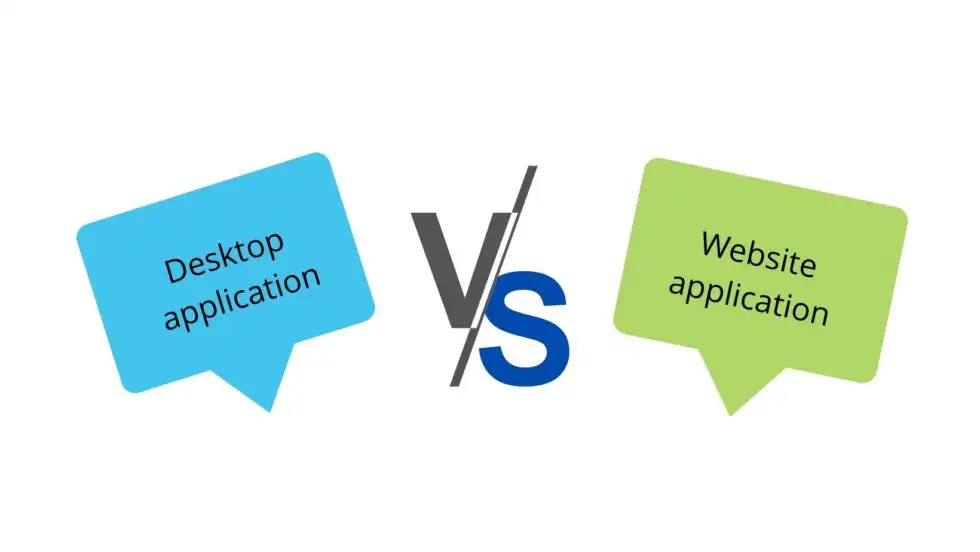Web Application vs Desktop Application: A Comprehensive Guide
 Harshal Suthar
Harshal Suthar
In the rapidly evolving landscape of software development, choosing between a web application and desktop application is a pivotal decision that can significantly influence the success of a project. This comprehensive guide delves into the core differences, advantages, and disadvantages of web and desktop application, helping you make an informed decision tailored to your specific needs.
Overview of Web App vs Desktop App
Web Application: Web applications are software programs that run on a web server and are accessed via a web browser over the Internet or an intranet. They do not need to be downloaded or installed on the user's device, making them highly accessible from any location with an internet connection. Examples include Gmail, Google Docs, and various e-commerce platforms.
Desktop Application: Desktop applications are software programs that are installed directly onto a computer's hard drive and run on the operating system of that specific device. They typically offer more robust features and better performance since they can leverage the full power of the local hardware. Examples include Microsoft Word, Adobe Photoshop, and AutoCAD. A desktop application development company can provide specialized services to create these powerful applications tailored to specific business needs.
Key Differences: Web application vs Desktop Application
Installation and Accessibility
Web Application: Require no installation; can be accessed from any device with a web browser.
Desktop Application: Require installation on each device; access is limited to the devices where the software is installed.
Performance
Web Application: Dependent on internet connection speed; performance can be influenced by server load and network latency.
Desktop Application: Generally offer faster and more reliable performance since they use the local system's resources.
Updates and Maintenance
Web Application: Updates are deployed on the server side, requiring no action from the user.
Desktop Application: Updates must be downloaded and installed by the user, which can be more cumbersome and time-consuming.
Security
Web Application: Security depends heavily on the server-side measures; exposed to internet-based threats.
Desktop Application: Security relies on the user’s system; potentially more secure if the system is properly protected and isolated from network threats.
User Experience
Web Application: Often have limitations in functionality compared to desktop applications, depending on the browser's capabilities.
Desktop Applications: Can provide a richer and more responsive user experience due to direct interaction with the operating system and hardware.
Advantages and Disadvantages of Web App vs Desktop App
Web Application
Advantages:
Accessibility from anywhere.
No need for installation or local storage.
Easier to deploy updates and fix bugs.
Platform independence.
Disadvantages:
Requires a stable internet connection.
Potential security risks from internet exposure.
Generally slower and less powerful than desktop applications.
Desktop Application
Advantages:
Superior performance and speed.
More powerful and feature-rich.
Can work offline without an internet connection.
Generally more secure if properly managed.
Disadvantages:
Limited to the devices where installed.
More complex to update and maintain.
Higher upfront deployment cost.
Use Cases of Desktop Application vs Web Application
Web Application are ideal for:
Businesses need to support remote work and access.
Applications that require frequent updates and maintenance.
Projects where accessibility and cross-platform compatibility are crucial.
SaaS (Software as a Service) models and e-commerce platforms.
Desktop Application are suitable for:
Resource-intensive tasks like video editing, 3D rendering, and large-scale data processing.
Environments where internet connectivity is unreliable.
Applications requiring deep integration with the operating system.
Scenarios demanding high levels of security and data protection.
Conclusion
The decision between developing a web application or a desktop application hinges on several factors, including the nature of the project, user needs, performance requirements, and budget constraints. Web applications offer unmatched accessibility and ease of maintenance, making them perfect for broad user bases and dynamic environments. Conversely, desktop applications provide robust performance and advanced features, making them ideal for specialized, resource-intensive tasks.
For businesses looking to develop powerful and feature-rich desktop software, partnering with a reputable desktop application development company is essential. By carefully weighing the advantages and disadvantages of each type of application, you can align your choice with your project's goals and deliver the most suitable solution for your users.
Subscribe to my newsletter
Read articles from Harshal Suthar directly inside your inbox. Subscribe to the newsletter, and don't miss out.
Written by
